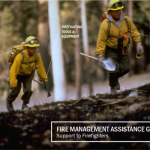WASHINGTON – This week, the Fifth Annual Building Resilience through Public-Private Partnerships Conference was held in New Orleans, Louisiana. The conference was hosted this year by the Federal Emergency Management Agency (FEMA) and brought together innovators from the private sector, nonprofits, and state, local, and tribal governments to pursue strategies to build a more resilient nation.
Each year, the conference attracts hundreds of participants who look to promote innovation in furthering ongoing partnerships and resiliency. Key topics of discussion included: Executive Perspectives on Investing in Business Resilience; Harnessing Technology to Positively Disrupt the Status Quo; The Smart City of 2025: Innovations for a Resilient Future; and action planning sessions to include Addressing Cyber Threats Now and into the Future and Disaster Collaboration Simulation Exercise.
The conference was held in partnership with the U.S. Department of Homeland Security through the National Protection and Programs Directorate and Private Sector Office, and North American Aerospace Defense Command and United States Northern Command and in collaboration with the American Logistics Aid Network, the American Red Cross, Business Forward, Business Executives for National Security, National Incident Management Systems and Advanced Technologies at the University of Louisiana-Lafayette, The U.S. Chamber of Commerce, and The U.S. Chamber of Commerce Foundation Corporate Citizenship Center.
Leaders from government, private sector and non-profits discussed the importance of strong partnerships across the whole community, and spoke about how their relationships helped to get the right resources to people in need more quickly. Exercises held during the week further exposed opportunities for conference participants to make new partnerships and better understand the resources and expertise that different organizations can offer throughout disaster response and recovery efforts.
Speakers included: FEMA Administrator, Craig Fugate; U.S. Department of Homeland Security (DHS) Assistant Secretary for the Private Sector, José Raúl Perales; DHS Assistant Secretary for Infrastructure Protection, Caitlin Durkovich,; FEMA Deputy Associate Administrator for Insurance and Mitigation, Roy Wright; FEMA Director, Office of External Affairs, Josh Batkin; DHS Deputy Assistant Secretary for Infrastructure Protection, Bob Kolasky; and American Red Cross, Senior Vice President, Disaster Cycle Services, Richard Reed.
“The private sector is an essential member of the team,” said FEMA Administrator Craig Fugate. “The more resilient businesses are, the quicker they can recover and provide critical goods and services to help their communities rebuild. Fostering strong working relationships between the private sector, emergency management, and the whole community is great business for everyone, especially the disaster survivor.”
With this public-private partnership approach, conference partners committed to taking action and promoting information sharing to facilitate greater understanding of the whole community roles and better leverage existing programs to promote meaningful outcomes to drive resiliency.
Conference participants took away concrete action plans and a collection of shared resources that they can implement immediately to further their organization’s resilience and nurture new partnerships. The development of a public-private sector national framework for information sharing and a public-private sector model to facilitate successful partnerships at all levels are an example of the commitments made. FEMA and its Private Sector Division are committed to leading the charge on continued identification of solutions to coordination gaps and strengthen the understanding of roles between the public and private sectors to build national resilience and successful public-private partnerships.
For additional information, visit the 2015 Building Resilience through Public-Private Partnerships Conference page and follow the conversation at: #PPPWayForward.
###
FEMA’s mission is to support our citizens and first responders to ensure that as a nation we work together to build, sustain and improve our capability to prepare for, protect against, respond to, recover from and mitigate all hazards.
Follow FEMA online at www.fema.gov/blog, www.twitter.com/fema, www.facebook.com/fema and www.youtube.com/fema. Also, follow Administrator Craig Fugate’s activities at www.twitter.com/craigatfema.
The social media links provided are for reference only. FEMA does not endorse any non-government websites, companies or applications.





